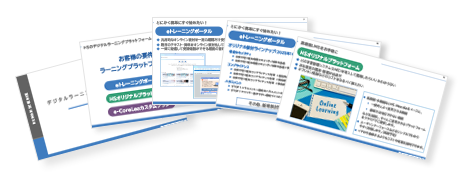2017.07.27
[Breaking News] Flash Support Ends in 2020! What is the Future of e-Learning?
On July 25 (U.S. time), Adobe announced its plan to discontinue the provision of "Flash."
In conjunction with this announcement, which plans to end the distribution of Flash Player by the end of 2020, companies such as Google, Apple, and Microsoft have also indicated that they will gradually end support for Flash.
Finally, the time limit for Flash has been indicated, and it is not only still being used in internal systems but is also widely used in e-learning content. In the e-learning industry, the transition to HTML5* as an alternative technology to Flash has been progressing, but has the adaptation been completed? There are likely many companies that are still planning to do it.
> Details of Flash to HTML5 conversion and migration services here

*HTML5: Can be played in browsers such as Internet Explorer, and allows for the implementation of audio, video, animations, and more. No specialized software like Flash Player is required for playback.
Use of Flash in e-Learning
Until around 2010, Flash was the most powerful technology for creating e-learning materials. At that time, we used it in more than 90% of the content we created, almost all of it.
Due to issues with vulnerabilities and the trend of Flash not being supported on iOS (such as iPhones), the situation gradually began to change, and now we provide most of our materials in formats compatible with both Flash and HTML5.
> Details of Flash to HTML5 conversion and migration services here
From Flash to HTML5. Case Studies of Migration
As of July 2017, there are still users using old browsers that cannot play HTML5, which indicates the continued relevance (necessity) of Flash. So, what situations have other companies faced in transitioning from Flash to HTML5? Here are examples of clients we have assisted in the transition.
[Case of Company A (Large Machinery Manufacturer)]
・Companies utilizing e-learning for in-house training
・Mobile compatibility achieved through the replacement of the Learning Management System (LMS)
・Especially overseas, there are employees who do not own a PC
・For on-site work verification and other purposes, we also want the content to be mobile compatible
⇒Converted hundreds of educational materials created in Flash into a format compatible with both Flash and HTML5, utilizing PowerPoint scripts. Developed production policies, including SCORM compliance to align with the specifications of the new system.
[Case of Company B (Major Education Provider)]
・A company providing educational materials B to C
・Increasing demand for learning on mobile devices
・Want to utilize the Flash assets created so far
・Implement mobile optimization (for smartphone and tablet interfaces, etc.)
⇒We started supporting HTML5 around 2012. In addition to converting Flash files to HTML5, we are adjusting the interface, such as screens and operation buttons, to make it easier to learn on mobile devices.
We have supported mobile compatibility and HTML5 conversion with plans tailored to your situation, such as converting Flash materials to HTML5 and creating new HTML5 materials based on original scripts like PowerPoint.
> Details of Flash to HTML5 conversion and migration services here
Towards a Positive Transition! The Significance of Converting Educational Materials to HTML5
In preparation for 2020, companies need to create an environment for transitioning away from Flash.
However, I do not recommend transitioning for negative reasons such as "we must respond because Flash will no longer be usable."
There are several benefits to transitioning to HTML5 and similar technologies.
- Avoiding Flash Vulnerabilities
- Mobile Learning Available
Learn what you want, when you want, whether on the go, at home, or in the office. - Easier to Learn Materials (Reducing learning resistance with more seamless and smooth operations)
The above items have room for discussion and technical challenges, but especially "2" and "3" will become essential for future learning.
- I am scheduled to meet a client for the first time today, so I would like to review the method for exchanging business cards.
- I would like to reconfirm the procedure while moving for equipment maintenance.
- I want to learn the ideal presentation methods for tomorrow's presentation.
In this way, I believe many people recall things they want to do or need to learn in various situations such as while traveling, during breaks, or at home. Mobile-compatible materials (HTML5) can meet these demands (of course, the content and delivery methods of the materials must also adequately respond to these needs).
Let's implement mobile compatibility according to the learners' environment and various other requests you wish to achieve.
> Details of Flash to HTML5 conversion and migration services here
Flash to HTML5 Migration and Conversion e-Learning Seminar
We hold seminars irregularly. We will post the schedule as soon as it is decided.For those who wish to receive seminar announcement emails, please register using the button below.
Related Services

Author:
Keigo Tachino
Education Solutions Department Consulting Unit
・Experience as a training instructor, web designer, etc.
・Engaged in instructional design, e-learning development, etc.
・Learning Designer (eLC certified)
・ATD International Professional Member
Adobe, Adobe Flash, Adobe Flash logo, and Flash Player are trademarks of Adobe Systems Incorporated.












